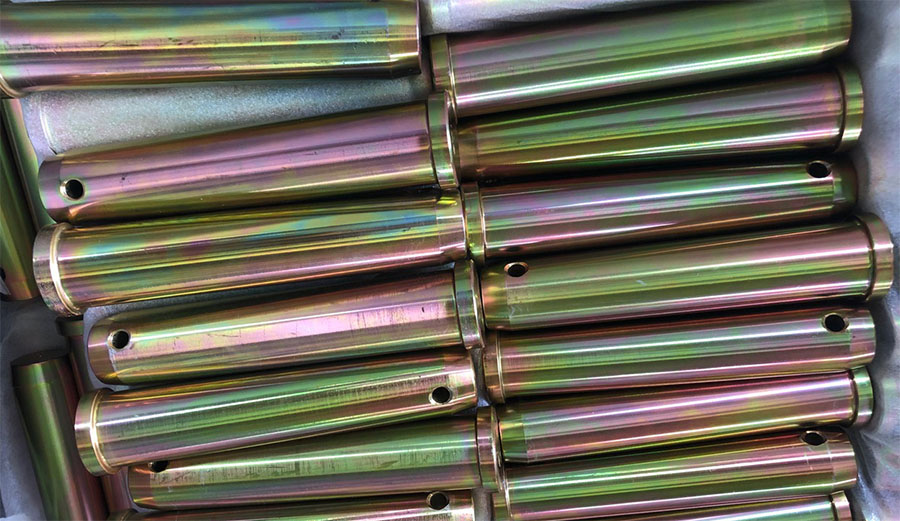In the world of manufacturing and engineering, the finishing process of machined parts plays a crucial role not only in enhancing their aesthetic appeal but also in providing essential protective qualities. One such process that stands out is colorful zinc plating. This technique not only offers a vibrant, aesthetically pleasing finish but also provides significant corrosion resistance, making it a popular choice in various industries. In this post, we will delve into the intricacies of colorful zinc plating, exploring its process, benefits, applications, and the science behind its vibrant hues.
Understanding Zinc Plating
Zinc plating is a galvanization process that involves the application of a thin layer of zinc onto the surface of a metal part. This layer serves as a sacrificial barrier, protecting the underlying metal from corrosion. The basic zinc plating process involves cleaning the metal part, applying a zinc coating through electroplating, and then passivating the part to enhance its corrosion resistance.
The Process of Colorful Zinc Plating
Colorful zinc plating, also known as chromate conversion coating, involves an additional step after the zinc plating process. This step entails dipping the zinc-plated part into a chromate solution, which can impart a range of colors to the surface. The chromate treatment not only enhances the visual appeal but also significantly boosts the corrosion resistance of the plated part. The colors produced can range from iridescent blues and purples to greens, yellows, and reds, depending on the composition of the chromate solution and the treatment parameters.
Benefits of Colorful Zinc Plating
Corrosion Resistance: The primary advantage of zinc plating, whether colorful or not, is its ability to protect the underlying metal from corrosion. The zinc layer acts as a sacrificial anode, corroding preferentially and thereby protecting the base metal.
Aesthetic Appeal: The vibrant colors achieved through chromate conversion coating can significantly enhance the visual appeal of machined parts. This is particularly advantageous for consumer-facing products where appearance matters.
Extended Lifespan: By providing excellent corrosion resistance, colorful zinc plating can extend the lifespan of machined parts, reducing maintenance and replacement costs over time.
Improved Adhesion: The chromate conversion coating also improves the adhesion of subsequent paint or powder coating layers, making it an ideal pre-treatment for parts that will undergo further finishing.
Versatility: Colorful zinc plating can be applied to a wide range of metals, including steel, aluminum, and brass, making it a versatile option for various applications.

Applications of Colorful Zinc Plating
Automotive Industry: In the automotive sector, colorful zinc plating is used for both functional and decorative purposes. Components such as fasteners, brackets, and trim parts often undergo this treatment to ensure they withstand harsh environmental conditions while maintaining a polished appearance.
Electronics: The electronics industry benefits from colorful zinc plating for components that require excellent corrosion resistance and conductivity. This includes connectors, terminals, and various hardware parts.
Consumer Goods: Colorful zinc plating is widely used in consumer goods such as hardware, appliances, and decorative items. The attractive finish enhances the visual appeal of these products, making them more marketable.
Construction: In construction, colorful zinc-plated parts are used in applications where both durability and aesthetics are important. This includes architectural hardware, fixtures, and fittings.
The Science Behind the Colors
The colors achieved through chromate conversion coating are the result of complex chemical interactions between the zinc layer and the chromate solution. Different colors are produced by varying the composition and concentration of the chromate solution, as well as the immersion time and temperature. For example, a yellow chromate finish is typically achieved using a solution containing hexavalent chromium, whereas a blue or clear finish might use trivalent chromium compounds.
The iridescent effect often seen in colorful zinc plating is due to the formation of a thin, transparent oxide layer on the surface of the chromate film. This layer causes light interference, producing a range of colors that change with the angle of viewing. This phenomenon is similar to the colors seen on soap bubbles or oil slicks.
Environmental Considerations
While colorful zinc plating offers numerous benefits, it is essential to consider the environmental impact of the process. Traditional chromate conversion coatings often involve hexavalent chromium, a highly toxic and carcinogenic substance. However, advancements in plating technology have led to the development of trivalent chromium alternatives, which are less harmful and meet stringent environmental regulations.
Conclusion
Colorful zinc plating is a versatile and valuable process in the manufacturing and engineering sectors. Its ability to provide both aesthetic and functional benefits makes it a preferred choice for a wide range of applications. As technology advances, we can expect to see even more innovative and environmentally friendly methods for achieving vibrant, corrosion-resistant finishes on machined parts. Whether in automotive, electronics, consumer goods, or construction, colorful zinc plating continues to shine as a testament to the power of combining beauty with durability.



